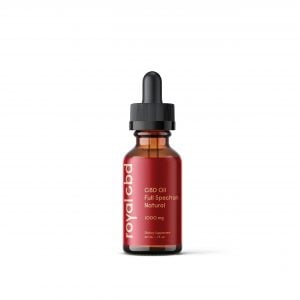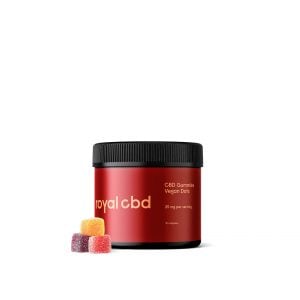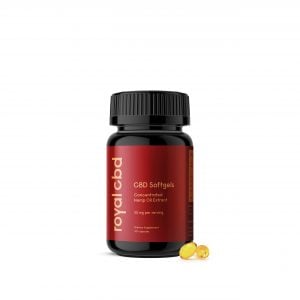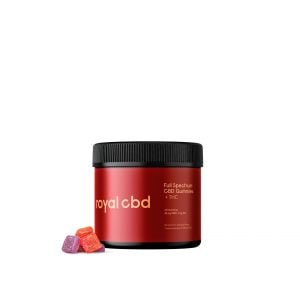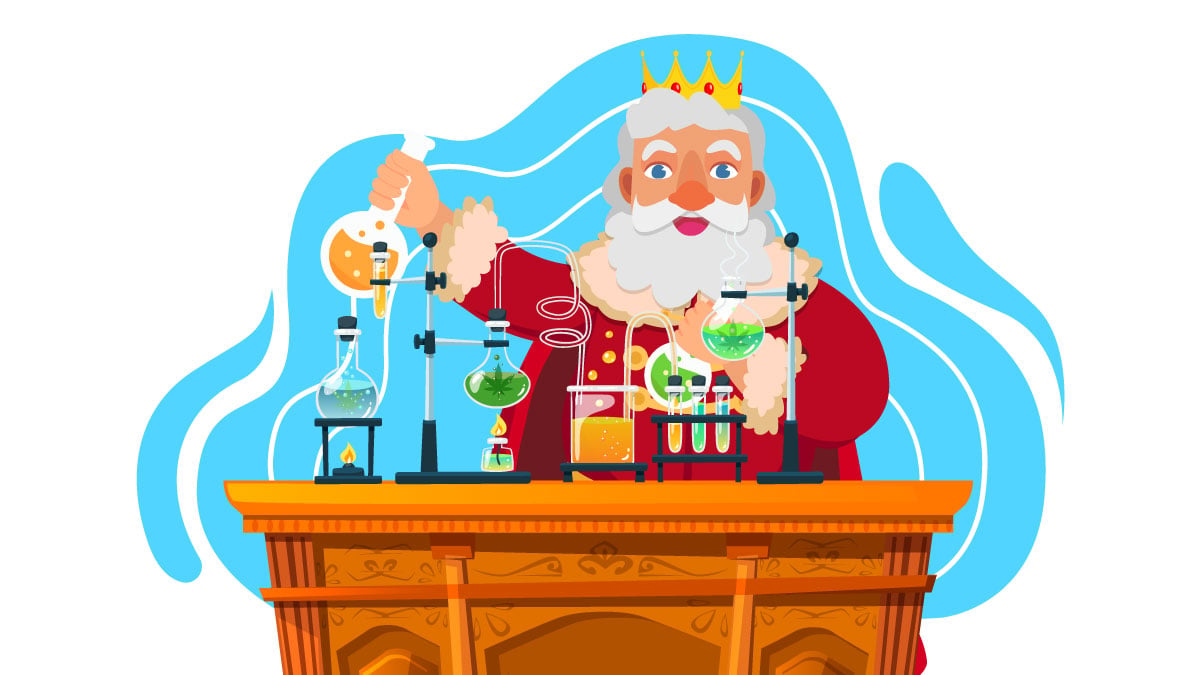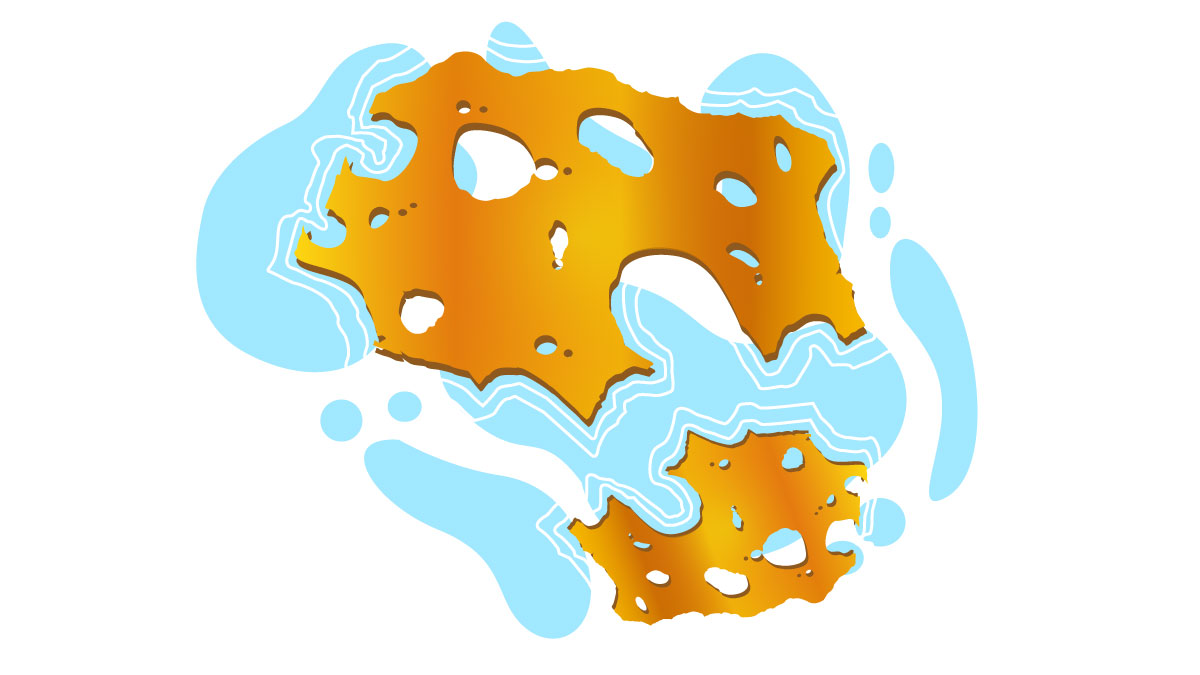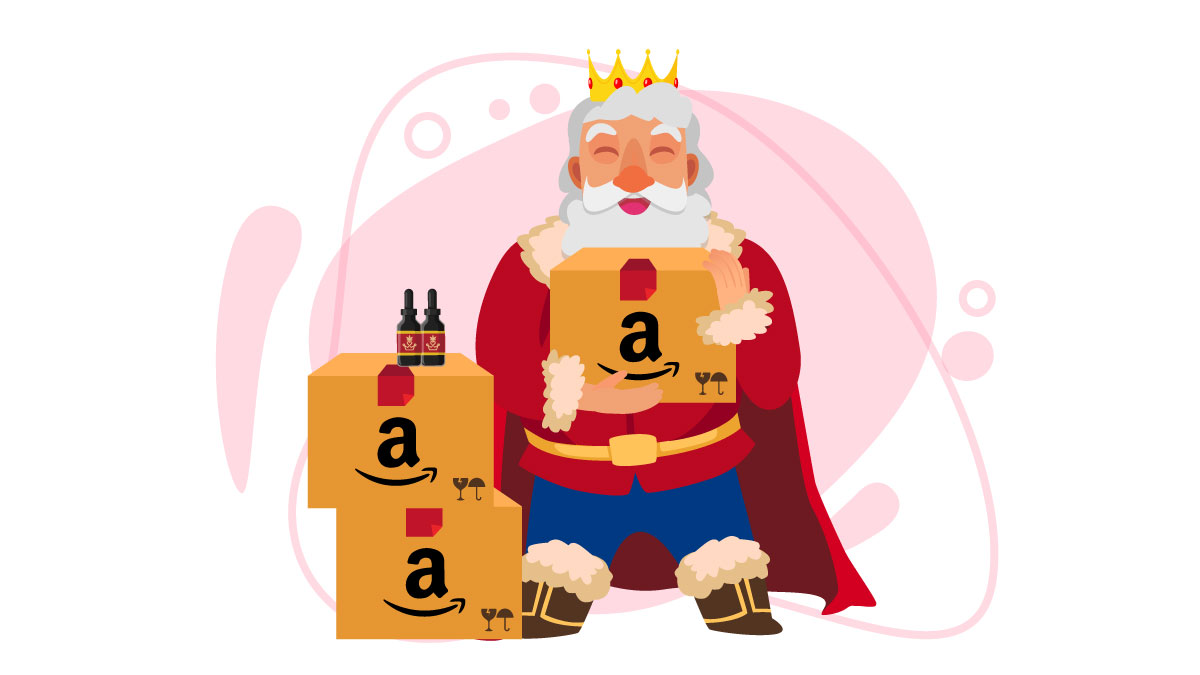Have you ever wondered how to extract CBD?
How are your CBD oils made?
CBD extraction is a highly technical process that can be made using a variety of different solvents. Each of these methods has their pros and cons, which we’ll cover in the article.
Knowing how your CBD is extracted will help you understand how all quality CBD products are made.
Without extraction, the CBD market would be far in the stone age, and we would have never experienced such a diversity in the cannabis industry.
Could you imagine the world of CBD without oils, capsules, gummies, and topicals?
Okay, that was a rhetorical question.
In this article, we’ll cover:
- Where CBD is sourced from
- How to extract CBD from hemp plants
- Why reputable brands choose CO2 extraction
- How to extract CBD without expensive CO2 equipment
Let’s start with the basics.
What is CBD (Cannabidiol)?
CBD is an abbreviation for cannabidiol, one of the two major cannabinoids in the cannabis plant.
Unlike its cousin THC, CBD won’t get you high or stoned because it doesn’t have mind-altering properties.
In very simple terms, CBD allows you to experience the health benefits of cannabis like reduced anxiety, effective pain management, sleep support and improved immune function — but without the buzz.
That’s because CBD doesn’t directly bind to any of the cannabinoid receptors.
Instead, it signals the endocannabinoid system (ECS) to release more of its natural endocannabinoids while slowing its breakdown so these valuable compounds can stay in your system for longer, supporting your body’s ability to self-regulate important biological processes (homeostasis).
CBD also acts on several other ECS-independent routes. For example, it activates the TRPV-1 receptor, which controls a range of functions from inflammation to pain perception and body temperature.
Finally, CBD can alter the intoxicating effects of THC by preventing the FAAH enzyme from breaking down anandamide, an endocannabinoid whose chemical structure is almost identical to THC. With more anandamide in the bloodstream, the molecule competes with and reduces the intoxicating effects of THC.
How is CBD Extracted?
CBD can be extracted from hemp and marijuana plants grown in the US or overseas.
The source of CBD is paramount because it determines what other compounds are captured during extraction. This, in turn, affects their legal status.
Hemp is a variety of Cannabis sativa that contains higher concentrations of CBD and only a trace amount (up to 0.3%) THC by dried weight.
Marijuana, on the other hand, is naturally high in THC, the psychoactive compound that makes people feel high.
Is CBD Legal?
As mentioned, the legal status of CBD depends on its source.
Hemp-derived CBD is legal in all 50 states under the 2018 Farm Bill. The new law allowed farmers to grow hemp plants for commercial use, including paper, clothing, fuel, building materials, food, and health supplements such as CBD.
The best companies use non-GMO, organically grown hemp from local farms. In the United States, regions like Colorado, California, Kentucky, Oregon, and Tennessee are known for the best environmental conditions for growing organic hemp. The problem, however, is that growing hemp organically on small farms is more expensive, so many companies prefer to use lower-quality mass-produced hemp to cut down on costs.
At Royal CBD, we put quality ahead of costs, sourcing our hemp from friendly farmers in Colorado who cultivate their plants in clean soil and without pesticides or growth boosters.
If you’re looking for CBD products from marijuana, you’ll need to be in one of the states that have legalized it for recreational or medicinal use because marijuana remains illegal on the federal level as of this writing.
CBD Extraction 101: How to Extract CBD
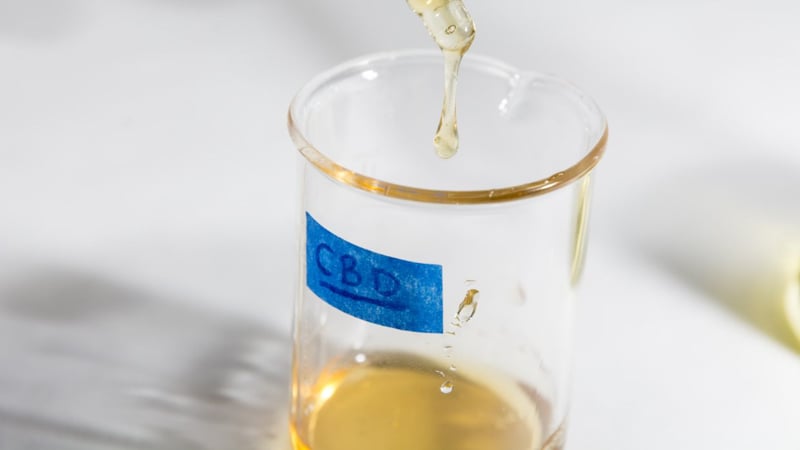
The idea behind CBD extraction is to capture the desired chemical compounds from the hemp plant while eliminating unwanted compounds such as fiber, plant sugars, and minerals.
Once mature and harvested, hemp plants are brought to an extraction facility, where the whole magic happens.
There are several methods of extracting CBD from the hemp plant including:
- CO2 extraction
- Olive oil extraction
- Coldwater extraction
- Dry ice extraction
- Solvent extraction
Below we cover each method in detail.
1. CO2 Extraction
CO2 is by far the best extraction technology for CBD oils. There’s a good reason why this method has become so popular.
First, CO2 extraction is highly efficient. It yields pure extracts with consistent concentrations of CBD.
Secondly, and more importantly, it’s extremely safe because it avoids using toxic solvents.
Pressurized CO2 acts as a solvent itself when put under certain temperatures. It can isolate the active compounds from the unwanted plant matter and other phytochemicals.
Although CBD extraction with CO2 is safe and effective, it also calls for very expensive equipment. The machines required for CO2 extraction can cost up to $150,000.
There are two types of CO2 extraction: supercritical and subcritical.
Here’s a brief overview of both methods:
How to Extract CBD with Supercritical CO2
CBD behaves like gas in its natural environment. However, this can be easily changed when you apply different temperatures and pressure levels.
At Royal CBD, we use supercritical CO2, as it yields optimal results in terms of the yields and preserved compounds.
When the temperature of CO2 gets reduced below -69 F, with pressure levels over 75 PSI, it enters a supercritical state, behaving both as a liquid and a gas.
Supercritical CO2 can fill a container without losing density, being just the perfect solvent. It yields a clean product without damaging its active compounds.
When you apply CO2 through some quality hemp plants in an extractor, the carbon dioxide will pull the cannabinoids, terpenes, and essential oils from the plant material.
Any of the fat-soluble compounds will be contained in the extracts, leaving away insoluble compounds.
The final step involves verifying the solution by a separator and splitting it into its requisite ingredients.
Once there, CBD is sent along with other cannabinoids and phytochemicals to the collection container. Meanwhile, CO2 gets condensed into its liquid form again and transferred to a special storage tank for future extractions.
How to Extract CBD with Subcritical CO2
Unlike supercritical CO2, its subcritical version operates at a lower heat and lower pressure. The extraction process is more time consuming and yields smaller quantities of CBD, but on the other hand, subcritical CO2 is more likely to save more vulnerable compounds such as terpenes, which often evaporate at higher temperatures.
Subcritical extraction is a similar process to cold water or dry ice extraction — more on that later article.
Mixing supercritical CO2 with subcritical extraction helps to create full-spectrum CBD oils that produce the entourage effect.
Pros & Cons of CO2 Extraction:
Pros:
- It’s the safest extraction method out there
- It produces high-purity extracts
- It’s a well-known technology in other industries (e.g. caffeine extraction)
Cons:
- It’s very expensive
- It requires a big learning curve
2. Vegetable Oil Extraction
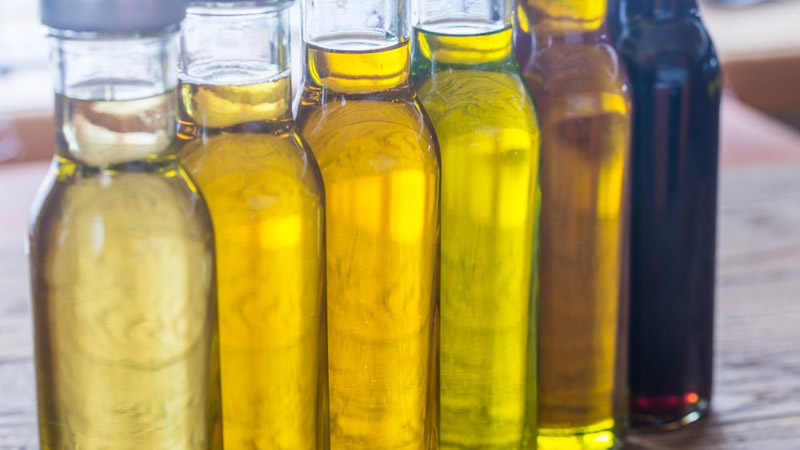
You can easily extract CBD at home using vegetable or cooking oils.
These oils work as solvents, but the whole process follows the same principles as all other forms of extraction.
You can use any common cooking oil, such as:
- Olive oil
- Butter/ghee
- Coconut oil
- MCT oil
- Hemp seed oil
- Sweet almond oil
- Sunflower oil
- Argan oil
The choice oil usually boils down to its availability and what you’re planning to use the end product for.
For instance, if you want to extract CBD for edibles, we recommend that you use a saturated fat like butter or coconut oil. For salves and creams, people typically go with sweet almond oil or argan oil. When looking for homemade CBD oil, cheaper solvents like olive oil are a good choice.
How to Extract CBD Using Vegetable Oils
Extracting CBD oils with vegetable oils is pretty straightforward.
You need to decarboxylate your dried CBD plant material; decarboxylation is a fancy term for activating cannabinoids with heat. You want to heat your cannabis at 250 F for 30–60 minutes in the oven, stirring time and again.
Once done, add the decarboxylated herb to the olive oil in a saucepan and slowly heat the mixture to 210 F.
Maintain the temperature and keep the CBD cooking oil over low heat for up to 2 hours.
Pros & Cons of Vegetable Oil Extraction
Pros:
- Easy
- Safe
- Inexpensive
Cons
- Low efficiency
- CBD products extracted this way have a shorter shelf-life
3. Organic Solvent Extraction (Alcohol and Hydrocarbons)
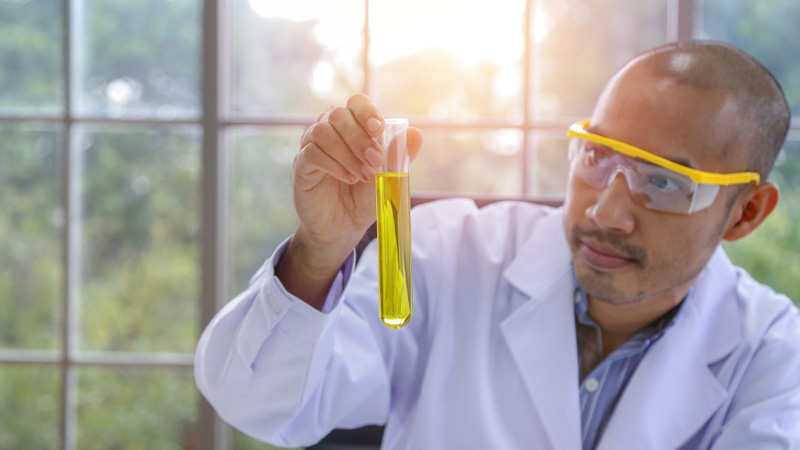
Organic solvents include compounds such as butane, propane, or alcohol (methanol or ethanol). These are the least expensive methods to extract CBD from the hemp plant.
Here’s a shortlist of popular choices of organic solvents for CBD extraction:
- Butane
- Propane
- Hexane
- Ethanol
- Ether
- Methanol
While cheap, not all of these solvents are equally safe. While alcohol is generally considered safe, most of the above solvents are toxic and need to be removed after initial extraction before the product is bottled up.
Solvent-based extraction requires soaking the plant material in the solvent. The liquid will run through the hemp, pulling the cannabinoids and terpenes from the flower along with chlorophyll. Once the solvent has collected enough cannabinoids, the liquid is heated in a special dish to evaporate it and suspend the extract in a carrier oil.
NOTE: Not only are most of the solvents toxic, but they’re also highly flammable. It requires precision to remove the highly explosive vapors from the extract to avoid serious injuries or property damage.
If you want to run solvent CBD extraction at home, we recommend using alcohol to omit the evaporation process. This is the easiest method to produce homemade CBD oils. What you’ll essentially get in the end is a hemp tincture. Tinctures become more potent over time, so the longer you soak the plant in alcohol, the stronger it will get.
How to Extract CBD at Home Using Alcohol
- Decarboxylate your CBD in the oven (this step is the same as in vegetable oil extractions).
- Transfer the decarboxylated buds into a jar and soak it in high-proof alcohol.
- Seal the jar tightly and allow it to sit for a few weeks, giving it a vigorous shake once a day
- Strain your extract through cheesecloth or fine mesh strainer and bottle your CBD tincture up.
You can speed up the third step using two different techniques. The first one involves pasteurizing the jar in a water bath at 170 F for about 20 minutes; the second technique requires you to shake the jar continuously for 3 minutes after combining CBD flower with alcohol.
However, remember that the reduced waiting time will result in the lower potency of your tincture, so if you want a highly concentrated product, we suggest that you let it sit for at least 2 weeks.
Pros & Cons of Solvent-Based Extraction:
Pros:
- Doesn’t require expensive machines
- Highly efficient
- More bioavailable than other forms of extraction
Cons
- Very dangerous (shouldn’t be performed at home unless you’re going to use alcohol)
- Often leaves unwanted plant material in the final product
4. Dry Ice Extraction
The dry ice method is another way to perform CBD extraction at home. However, it’s more time-consuming than olive oil or alcohol extraction.
This technique uses dry ice to pull CBD from the plant material. It’s a relatively cheap and safe method to produce high-quality CBD hash without using toxic solvents.
Solventless extraction always yields cleaner products than solvent-based methods. Besides, making CBD extracts with dry ice brings a lot of fun.
How to Extract CBD Using Dry Ice
Equipment:
- 3 lbs of dry ice
- A large sheet of plexiglass (or a large mirror)
- Thick, heat-resistant gloves
- Eye goggles
- A putty knife
- A clean 5-gallon bucket
- 3 bags of bubble hash mesh (73, 160, and 220 microns)
- 3 large jars with lids
Instructions:
- Put on the gloves and goggles.
- Break apart (or grind) your CBD buds into smaller pieces and place it in the bucket.
- Cover the cannabis with dry ice, leaving it there for 3 minutes. Make sure the bucket is filled halfway. This process will freeze the resin so the trichomes can be transferred to the hash mesh bags.
- Fold each bag over the bucket with your dry ice mixture and shake it several times to separate the frozen trichomes from the plant.
- Turn the bucket upside down on the mirror and shake again, collecting as much resin through the hash bag as possible. Once you’ve scraped the hash off the mirror, you can transfer it into one of the jars.
- Repeat the process with the remaining bags and enjoy your homemade dry-ice CBD hash.
What is Decarboxylation and Why is It Important in CBD Extraction?
Most CBD products go through a process called decarboxylation.
If you’ve ever made cannabis edibles, you should be familiar with the process.
Decarboxylation means heating the cannabinoids so that an extra carboxyl group is broken down, activating THC and CBD.
This way, he cannabinoids can immediately engage with the endocannabinoid system. Without decarboxylation, CBD remains in its acidic and inactive form CBDA.
Some CBD oil brands label their extracts as “raw” if they don’t decarboxylate it.
Key Takeaways on CBD Extraction
Knowing how to extract CBD gives you many opportunities to make your own CBD products at home, but it’s also a great way to learn the difference between low- and high-quality CBD oil.
People have been using different cannabis extracts for hundreds, if not thousands of years to deliver high concentrations of therapeutic compounds to their system. Without CBD extraction, the market would be limited to dried CBD flowers.
CO2 extraction is currently the best method to produce CBD, although if you want to kickstart a DIY extraction facility, there are less expensive techniques that can still yield decent products.
If you’re looking for commercial CBD products, make sure they have been made with supercritical CO2 like the entire Royal CBD line. CO2 extraction doesn’t require additional heat or solvents to produce pure and potent CBD oil; it does, however, require expensive equipment and know-how, so if a company uses CO2 extraction, it’s a sign they’re committed to quality.
